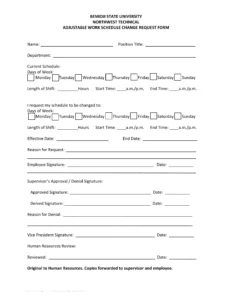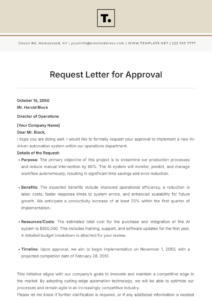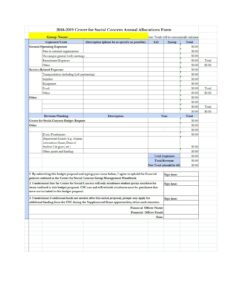Utilizing such a framework offers several advantages. It streamlines the approval process, reducing delays and improving communication between project teams and decision-makers. Clear and concise documentation clarifies project parameters, minimizing misunderstandings and potential conflicts. Furthermore, a standardized approach promotes better project governance by ensuring all necessary information is captured and reviewed before resources are allocated. This leads to more successful project outcomes and better resource allocation.
This understanding of structured project initiation forms the basis for exploring key aspects of project management. The following sections delve into the core components of a well-defined request, best practices for development and submission, and strategies for navigating the approval workflow.
Key Components of a Project Authorization Request
Effective requests for project authorization rely on a clear and comprehensive presentation of key information. These components ensure decision-makers possess the necessary details for thorough evaluation and informed decisions.
1. Project Title: A concise and descriptive title provides immediate context and clarity.
2. Project Overview/Executive Summary: A brief synopsis outlining the project’s purpose, objectives, and anticipated outcomes.
3. Project Justification/Business Case: This section articulates the strategic rationale for the project, highlighting its alignment with organizational goals and demonstrating its potential value.
4. Scope and Objectives: A clear definition of what the project will deliver and the specific goals it aims to achieve. This includes outlining deliverables, key milestones, and success criteria.
5. Timeline/Schedule: A projected timeline outlining key phases, milestones, and anticipated completion date.
6. Budget and Resource Allocation: A detailed breakdown of estimated costs, resource requirements (personnel, equipment, materials), and funding sources.
7. Risk Assessment: Identification and analysis of potential risks and challenges, along with mitigation strategies.
8. Stakeholder Analysis: Identification of key stakeholders and their roles, responsibilities, and influence on the project.
A well-structured authorization request provides a comprehensive overview, facilitating informed decision-making and contributing to successful project outcomes. Careful consideration of each component ensures clarity, alignment, and accountability throughout the project lifecycle.
How to Create a Project Approval Request
Developing a robust request ensures clear communication and facilitates efficient decision-making. A structured approach guides the process, ensuring all essential information is included for thorough evaluation.
1. Define the Project: Begin by clearly articulating the project’s purpose, objectives, and expected outcomes. A concise and compelling summary provides context and rationale.
2. Develop a Business Case: Justify the project’s strategic importance by demonstrating its alignment with organizational goals and the value it will deliver. Quantifiable benefits and return on investment should be highlighted.
3. Outline Scope and Objectives: Clearly define the project’s boundaries and the specific deliverables it will produce. Measurable objectives and key performance indicators (KPIs) should be established.
4. Develop a Timeline: Establish a realistic project schedule with key milestones and deadlines. Dependencies and critical path activities should be identified.
5. Determine Budget and Resources: Estimate project costs, including personnel, materials, and equipment. Resource allocation and funding sources should be clearly identified.
6. Conduct a Risk Assessment: Identify potential risks and challenges that could impact the project. Develop mitigation strategies and contingency plans to address these risks.
7. Identify Stakeholders: Determine key stakeholders and their roles within the project. Communication plans and stakeholder engagement strategies should be developed.
8. Choose a Template or Format: Select a suitable template or format that aligns with organizational standards. This ensures consistency and facilitates efficient processing.
A well-structured request, incorporating these elements, provides a comprehensive overview for decision-makers, enabling informed approvals and setting the stage for successful project execution.
Standardized documentation for project authorization requests provides a crucial foundation for effective project initiation and execution. By outlining key project details such as objectives, scope, budget, and timelines, these structured frameworks enable informed decision-making, streamline approval processes, and promote better resource allocation. A well-crafted request ensures clarity, minimizes misunderstandings, and fosters alignment between project teams and stakeholders. Furthermore, incorporating robust risk assessment and stakeholder analysis contributes to proactive risk management and enhanced communication throughout the project lifecycle.
Effective utilization of structured authorization processes leads to improved project governance, increased efficiency, and ultimately, higher project success rates. Organizations committed to optimizing project portfolio management must prioritize the development and implementation of these standardized approaches to project initiation. This proactive approach ensures that projects are thoroughly vetted, strategically aligned, and positioned for successful delivery, contributing to overall organizational goals and objectives.


